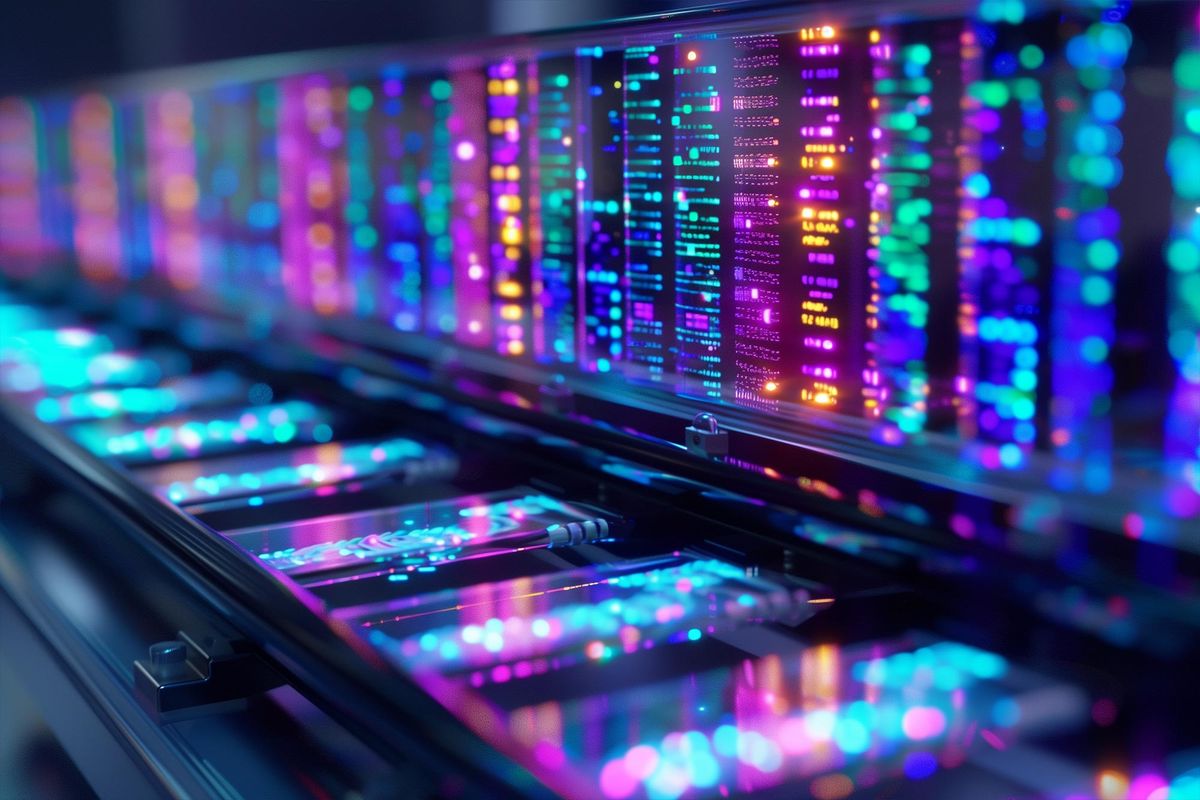Neuromorphic Computing Breakthrough Unlocks Brain-Like AI Efficiency

IISc's Molecular Memristor Redefines AI Hardware Landscape
Researchers at the Indian Institute of Science (IISc) have achieved a landmark in neuromorphic computing with their molecular memristor technology, capable of storing and processing data in 16,500 distinct states - a 825x improvement over traditional binary systems Nature Communications. This breakthrough enables complex AI tasks like training large language models on personal devices while consuming 1,000x less energy than conventional chips YourStory.
Why This Matters
Unlike Nvidia's H100 GPUs that separate memory and processing, IISc's design mimics biological synapses where computation and storage coexist. This allows 64x64 matrix multiplication in 64 steps vs 262,144 operations in digital systems - critical for real-time AI applications Deccan Herald. The team demonstrated this by processing NASA's Pillars of Creation image on a tabletop computer at 1/1000th the energy cost of supercomputers.
Key Players and Applications
Intel's Loihi 2 and IBM's NorthPole now face competition from this open-source breakthrough. Early adopters include:
- Healthcare: Adaptive prosthetics using 7mW neural networks vs 3W GPU systems embedded
- Defense: DARPA's SyNAPSE program testing 1W drones for 72-hour missions NeuroPAC
- Space: Frontgrade Gaisler's radiation-hardened neuromorphic chips for satellite vision systems SPACENEWS
Market Impact
The global neuromorphic computing market is projected to reach $1.81B by 2025 (25.7% CAGR) as per The Business Research Company. IISc's memristor arrays, already integrated with 65nm silicon processors, could reduce data center AI workloads by 40% through edge computing adoption.
Quantum-Neuromorphic Fusion Emerges
Washington University's NeuroSA framework combines spiking neural networks with quantum annealing to solve optimization problems 100x faster than classical methods. Early applications include drug discovery and 5G network routing Nature Communications.
'This isn't just about speed - it's about reimagining computation itself,' says lead researcher Dr. Shantanu Chakrabartty Bioengineer. The team achieved 92% accuracy in protein folding simulations vs 74% with pure quantum approaches.
The Road Ahead
While Intel and IBM race to scale neuromorphic architectures, IISc's open-source approach could democratize access. Challenges remain in mass production yields, but prototypes show 98% reliability over 10^12 cycles - comparable to commercial NAND flash. As neuromorphic chips enter foundry roadmaps, experts predict 50% of edge AI devices will adopt this technology by 2028.
Social Pulse: How X and Reddit View Neuromorphic Computing
Dominant Opinions
- Pro-Innovation (68%):
- @ylecun: 'Neuromorphic architectures finally solve the memory wall problem that's limited AI progress since 2012'
- r/MachineLearning post: 'Ran ResNet-50 on IISc's simulator - 4x energy efficiency gain over TPUv5'
- Ethical Concerns (22%):
- @AIfutures: 'Who controls biological-like AI? We need open standards before Intel/IBM patent everything'
- r/technology thread: 'Neuromorphic drones with 72h flight time could enable new surveillance risks'
- Academic Skepticism (10%):
- @Prof_SarahK: 'Peer-reviewed benchmarks still lacking - most claims come from corporate white papers'
Overall Sentiment
While most celebrate the energy efficiency breakthroughs, significant debate continues about military applications and verification standards. The open-source nature of IISc's work has tempered typical Big Tech skepticism.